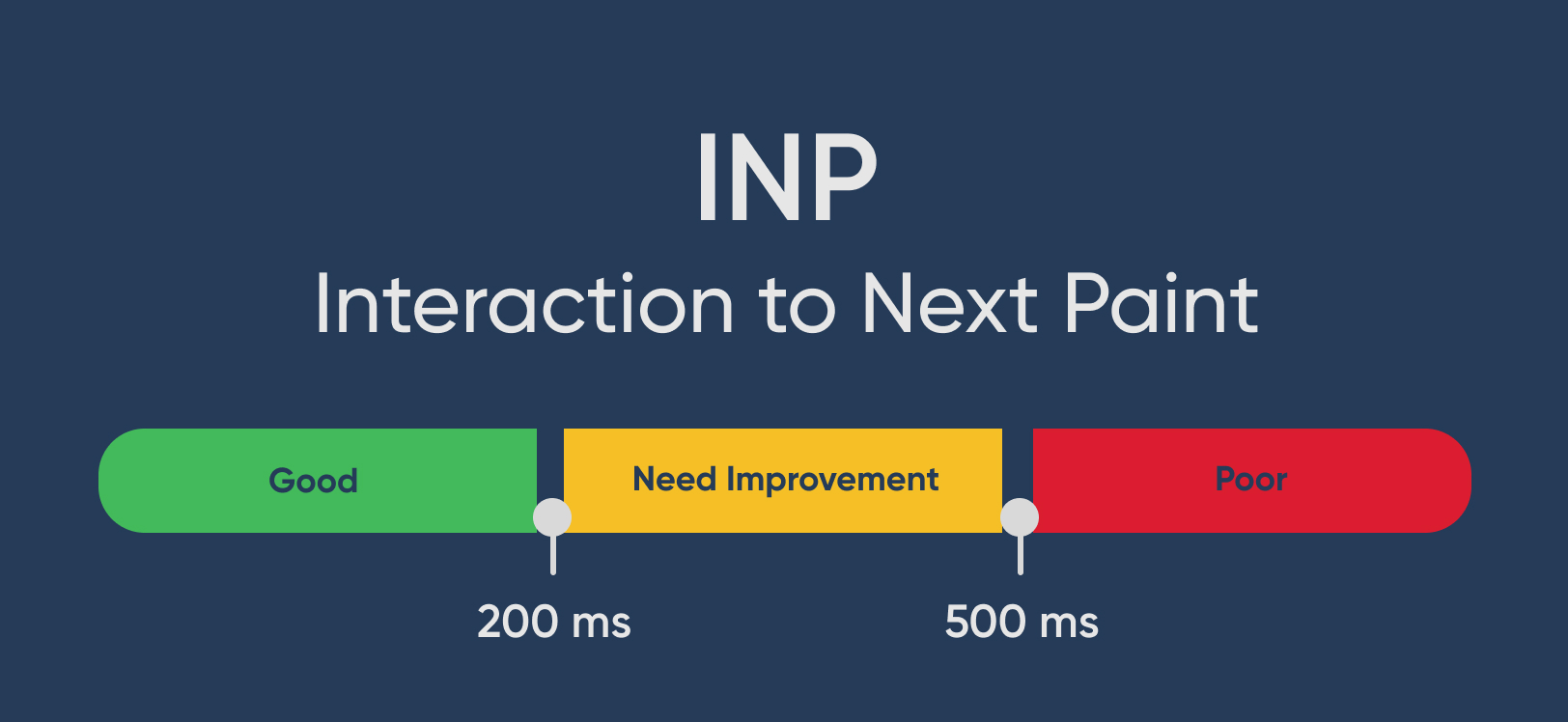
A Guide to Understand Interaction to Next Paint (INP): Google’s Latest Update
NOTE: Interaction to Next Paint (INP) is going to replace First Input Delay (FID) as a component of Core Web Vitals from March 12, 2024.
The previous Google Core Web Vitals rolled out in 2020 was all about effective updates for web pages. After almost four years of the previous update, Google is ready to roll out a new update as an upcoming change in the Core Web Vitals metric.
Interaction to Next Paint (INP), the upcoming update will help to evaluate a webpage’s attributes from the user’s perspective. We will describe in-depth the insight of INP and its impact on site owners further in this blog.

As a replacement for FID or First Input Delay, Interaction to Next Paint or (INP) is supposed to be an apt substitute for the limitations of the former update. It is only because of the limitations of FID that there was a requirement to cover this limitation.
As the search for a new and improved option started, the Chrome team then announced Interaction to Next Paint or INP. As soon as INP was announced, it was released in the community to test for efficiency.
After a year of effective testing and feedback gathering from the community, Interaction to Next Paint (INP) was announced to get into effect in March 2024. INP is supposed to be the new Core Web Vital Metric for responsiveness.
What is a Good INP Score?
Google has denoted certain scores to identify the performance of webpages as “good” or “poor”. Pages having good responsiveness generally have a better INP score.
In order to obtain a better INP score, a webpage’s responsiveness must remain below 200 milliseconds. Added to that, a webpage can have any of the following metrics to be denote as a good or a poor webpage.
An INP exceeding 500 milliseconds reflects poor responsiveness for your page
- An INP below or the same as 200 milliseconds indicates excellent responsiveness
- INP of 200 and 500 milliseconds indicates the webpage’s responsiveness needs improvement
- INP that exceeds more than 500 milliseconds is an indication of poor responsiveness for your page
What does this Update Mean for Google Search Console?
Replacing FID, a new metric called INP will take the place of the former update as a new and improved webpage metric. To help web developers and site owners adapt to this change effortlessly, Search Console will include Interaction to Next Paint into the Core Web Vitals report later this year. Subsequently, as INP will replace FID in March 2024, the FID metric will cease displaying the same while INP will be displayed as the primary metric for evaluating responsiveness.
How to Prepare for the New Update?
Adopting the new changes is critical for site owners to achieve excellent Core Web Vitals for success in Search in addition to ensuring an optimal user experience. However, it is not only about achieving an excellent page experience for users but also achieving positive metrics as explained below:
- Site owners must ensure optimising blog pages to suit specifications as detailed in the recent INP update
- There is an added requirement of evaluating the INP performance with tools such as Chrome’s User Experience Report and Page Speed Insights
- Optimising INP also requires site owners to boost JavaScript and CSS resources
- Monitoring and measuring INP will help improve the same consequently
The Bottom Line
Improving a site’s INP is a gradual process. Monitoring and fixing issues continually to improve the INP will help in achieving a good score. Once you begin identifying these interactions and optimising them concurrently, the INP score will improve with each optimisation iteration.
